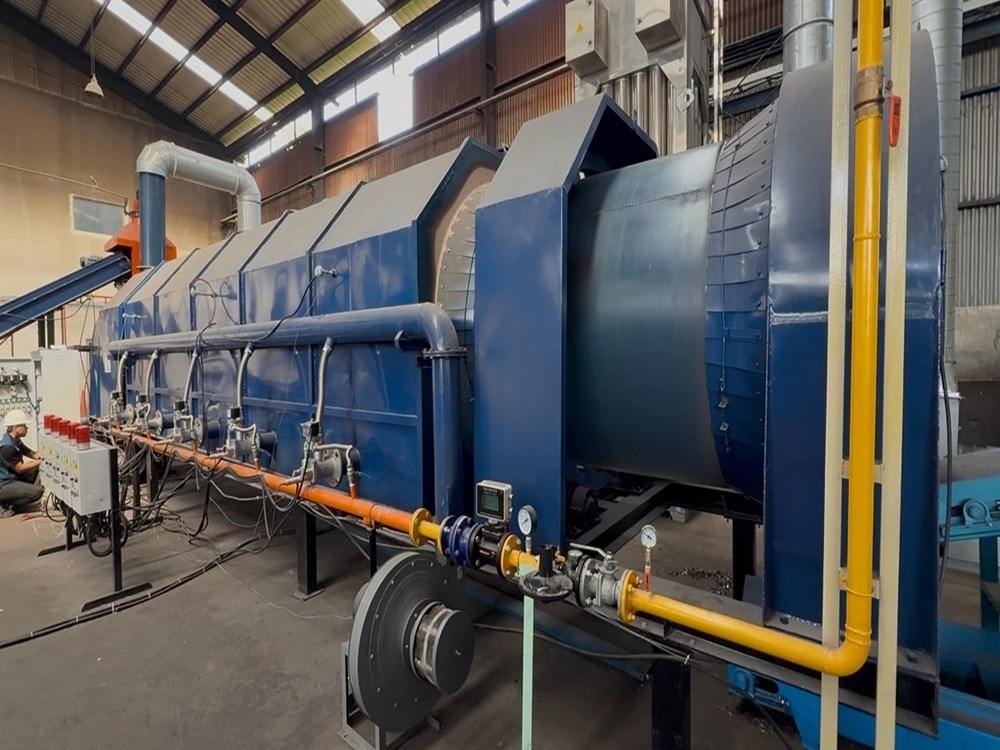Unlocking Hidden Value: The Importance of Paint Removal in Aluminum Can Recycling
Nov 26, 2024
Aluminum cans are essential packaging materials in our modern world, widely used for beverages and food. However, as consumption grows, so does the challenge of recycling. A critical yet often overlooked step in the recycling process is paint removal—a procedure that significantly enhances the value of recycled aluminum.
Why Remove Paint from Aluminum Cans?Most cans are made from high-quality aluminum but coated with a protective paint layer that prevents corrosion and adds visual appeal. During recycling, this paint becomes a problem. If not removed, it can release harmful substances during smelting, contaminating the aluminum and reducing its quality. The paint layer also lowers the cans’ scrap value since recyclers must account for additional processing costs. Removing the paint not only improves aluminum purity but also substantially increases its market value.
Paint Removal Technologies: Efficiency and Environmental BenefitsSeveral technologies are used for paint removal, with thermal de-painting furnaces emerging as a leading solution. These systems use high-temperature pyrolysis to quickly decompose paint layers without open burning or chemical pollution. A modern thermal de-painting furnace can process thousands of cans per hour with stable results and continuous operation capability.
These systems are highly automated, energy-efficient, and produce no secondary pollution—making them ideal for large-scale recycling operations. Compared to traditional mechanical or chemical methods, thermal treatment offers higher efficiency and better environmental performance.
Synergy with Continuous Carbonization FurnacesIn advanced recycling setups, de-painting furnaces are often paired with continuous carbonization furnaces. After paint removal, cans may still contain residual organics. The carbonization furnace thermally treats the metal in an oxygen-free environment, thoroughly decomposing any remaining contaminants. This two-step process—de-painting followed by carbonization—ensures high-purity aluminum output ready for smelting.
This integrated approach not only improves metal quality but also reduces energy use and extends the life of smelting furnaces by minimizing impurities.
Economic and Environmental AdvantagesInvesting in modern de-painting systems brings clear financial returns. While initial costs are significant, the long-term benefits include higher aluminum prices (due to improved purity), lower processing expenses, and increased processing capacity. Moreover, this approach supports circular economy goals by turning waste into high-value raw materials.
From an environmental perspective, de-painting and carbonization reduce emissions, avoid chemical waste, and support sustainable production practices—increasingly important in a world focused on green manufacturing.
Future OutlookAs environmental regulations tighten and demand for clean aluminum grows, the role of de-painting technology will continue to expand. Future systems will likely become more intelligent and automated, offering even greater efficiency and control. For recyclers and investors, these technologies represent not just an operational upgrade, but a strategic commitment to sustainability and profitability.
In summary, paint removal is no longer an optional step—it’s a vital process that unlocks both economic and environmental value in aluminum can recycling.
LEIA MAIS




